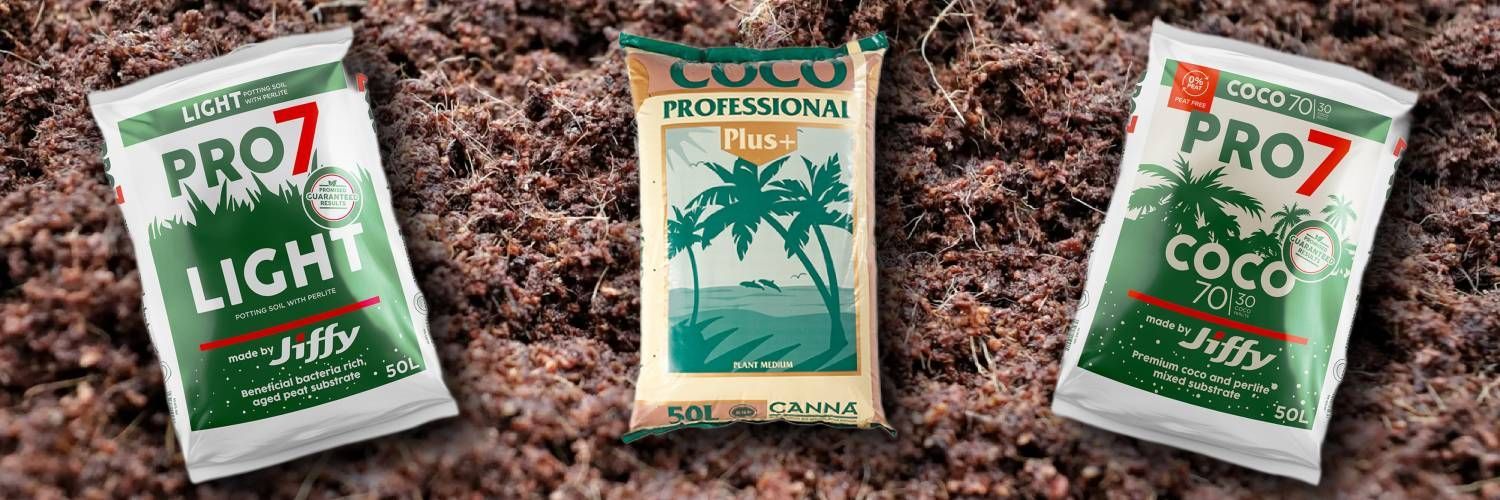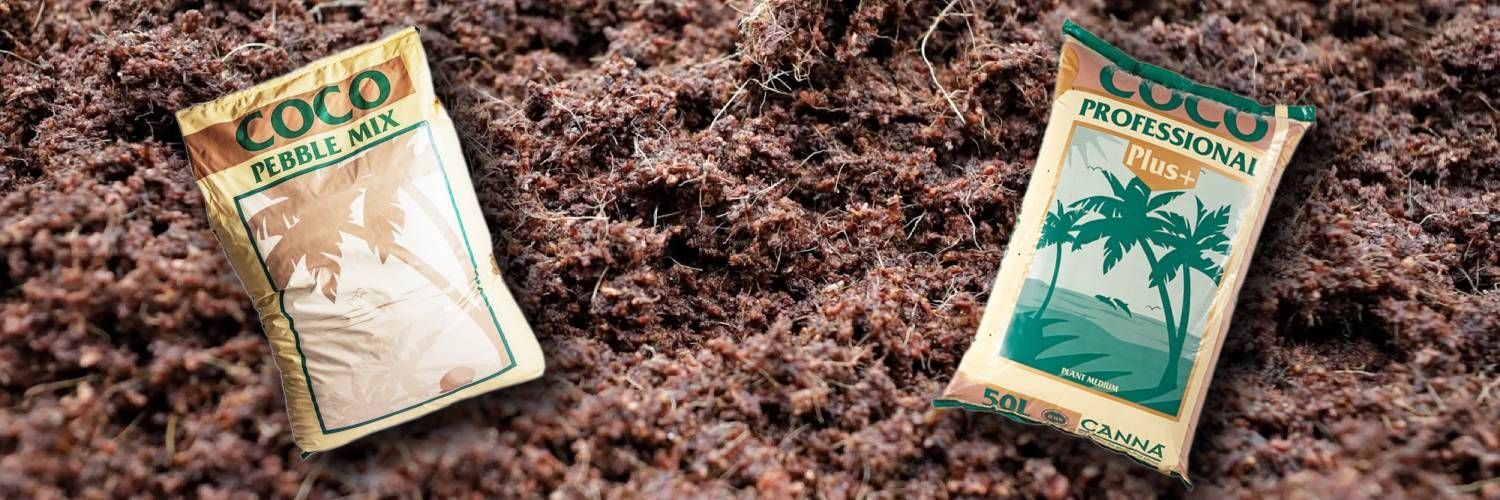The Roots of Horticultural Hydroponics
Background to Horticultural coco

Coco was initially seen as a replacement for peat in greenhouse production – coco does not have the water repellence of dry peat, or the low pH values. However in the early days of experimentation with coco growing substrates many problems were found due to inconsistency of the product. Many coconut sources were retted in seawater and contaminated with very high levels of sodium and unpredictable levels of naturally occurring potassium. Often piles of coir dust were not left to decompose sufficiently and the resulting coco had a high nitrogen draw down index, this meant that under soilless cultivation, even with well balanced nutrients, nitrogen deficiencies in the early stages of growth were common. Coco substrates also had a high cation exchange capacity and retained calcium, phosphate and iron meaning these became unavailable for plant uptake until the coco had been in use for some time and had fully `conditioned’. As a result many soilless growers initially experienced problems with coco they didn’t understand. Few growers understood the degree with which the coco media was affecting the composition of the nutrient solution in the root zone and the fact that the coco provided an almost ideal physical structure for plant growth was overlooked.
However, high quality horticultural coco is now recognised as a superior growth media for soilless crops on both a small and commercial scale and many of the initial problems have been overcome by correct processing of the raw product and adjustment or pre treatment before packaging. High quality coco substrates on the market for soilless cropping have often been specifically processed for this use right from the point of removal from the coconuts, through to preconditioning, buffering and pre treatment. This means that nitrogen draw down is no longer a major problem, sodium contamination from retting in seawater does not occur, the naturally occurring potassium levels are adjusted and treatment with calcium and other ions is carried out before the product is packaged. Suppliers of high grade coco also carry out regular testing of their product to check for any irregularities in supply and to correct for these. However while there are excellent brands of coco on the market, there are also still poor quality supplies still being sold as a growing medium and growers need to select and only use a reputable brand, preferably one which has an accompanying `coco nutrient’ formulation designed to work with the cation exchange properties of the product. These days good quality coco has proven to be a superior growth substrate for a large number of different crops, with the advantage of being from a renewable and environmentally sound resource.
Different types of coco products – uses, pros and cons
There are many different types of coco products on the market. The husk of coconuts yields not only very coarse long fibres which are used to make a wide range of products such as rope, carpets, mats, brushes, basket liners and others, but between these coarse fibres is a corky substance called coir pith, coir dust, coco peat or coir peat. Many grades of horticultural coco exist and some have been specifically designed for different plants and systems. The very fine particle size of coir dust retains a high level of moisture and this is suited to seed raising and for smaller seedlings and plants. While a high moisture holding content in fine coco dust is an advantage in some situations, it can create problems with over saturation of the root zone. Grades of coco often used in slabs may consist of larger particles or `flakes’ of coco which allow a good degree of drainage and resist packing down over time as commonly occurs on substrates such as peat.
Coco fibre is also the term often used to refer to the general purpose grade of coco which is ideal for growing longer term crops under soilless cultivation. Worldwide coco is used for soilless crops such as tomatoes, peppers, cucumber, melons, aubergines, ornamentals, cut flowers and many others because the structure of the coco does not break down over the time frame these longer term crops are grown for. Thus high rates of root zone aeration and moisture retention are typical in both short and long term soilless crops and this results in high yields and good root health.
Coco also comes in a range of different products – from small to large compressed `bricks’ to `grow slabs’ to pre expanded ready to use, bagged product. Compressed bricks of coco fibre mean the cost of shipment can be kept to a minimum, a typical 5Kg block of compressed coco can be expanded in water to over 65 litres of ready to use growing substrate. Pre wrapped slabs of compressed coco can be less than one inch thick but when expanded with water within their plastic sleeve give a full sized growing slab comparable in volume to rockwool.
The advantage of coco bricks is that once expanded the media can be used to fill any size or shape of growing bed, pot or bag, the disadvantage is that a time is required for the media to fully expand and some labour is needed to fill the growing plots. Loose coco placed into growing pots or containers can be easily inspected for moisture level by checking the appearance of the top of the substrate or by feeling the moisture level of the coco just below the surface, this is more difficult in wrapped coco grow slabs. The coco slab only needs to be placed in position, slits cut in the plastic sleeve and water poured in – the coco expands and can be planted out with no further effort. The disadvantage of slabs is that they need a very level surface to sit on so that drainage is even and they don’t provide the depth of growing substrate that a planter bag or pot can for larger plants.
Check out our great Coco products from Canna



